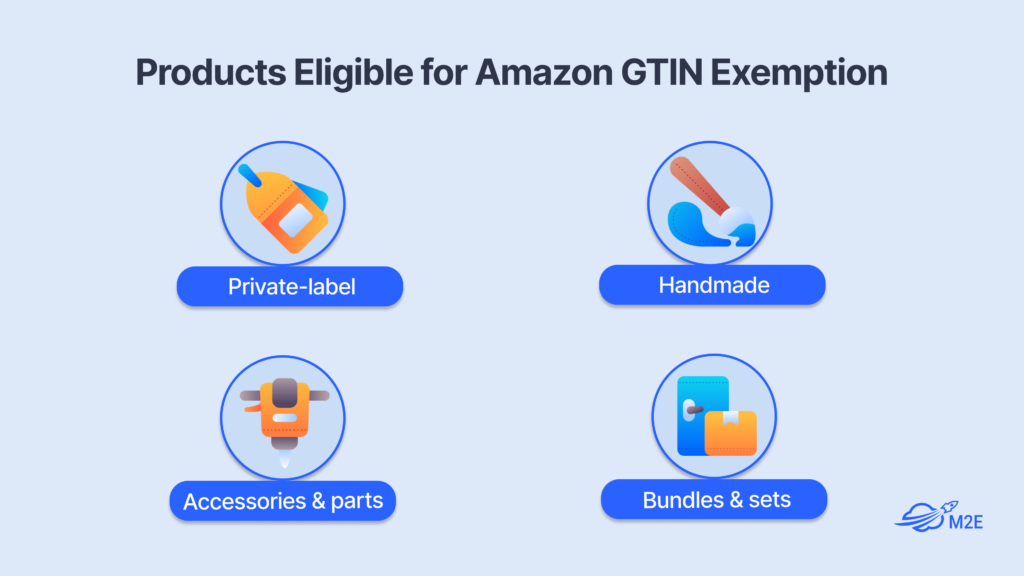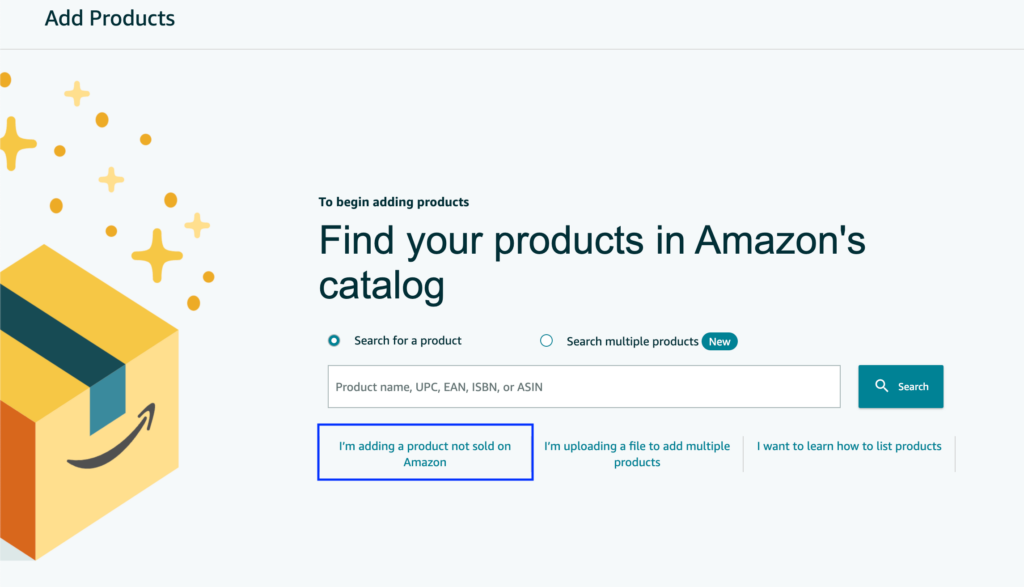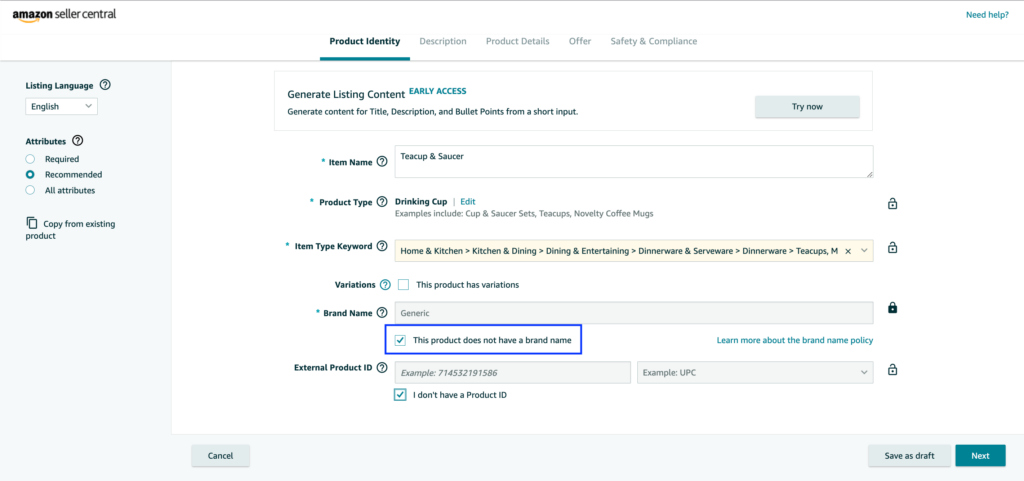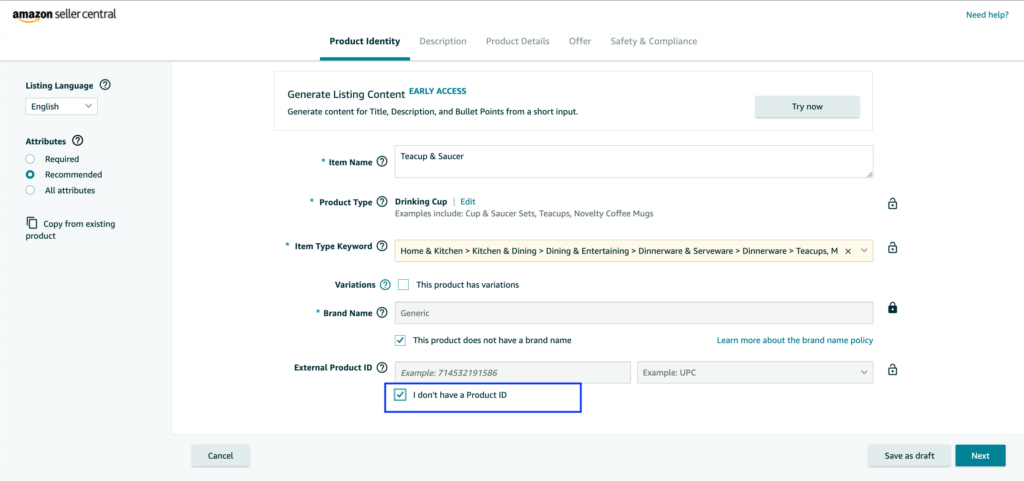When listing an item for sale on Amazon, it’s generally required to have a unique identifier, typically a Global Trade Item Number (GTIN). Amazon rigorously checks each GTIN listed on the site to ensure it’s officially registered and valid. Nonetheless, specific products, such as those that are private-label or handcrafted, might qualify for an Amazon GTIN exemption.
Are you wondering what exactly a GTIN exemption is and whether you need to apply for it to list your items on Amazon? This post will cover all the details, including instructions for obtaining an exemption and listing products exempt from GTIN on Amazon using M2E Sales Channels.
Meaning of Amazon GTIN Exemption
Let’s begin by defining GTIN, which is a unique series of digits assigned per product. This identifier is essential for selling items on digital platforms such as Amazon. Merchants use GTINs to organize and label their products to prevent issues like catalog discrepancies and data mismatches. While it plays a crucial role in product identification and inventory management, the GTIN is not the barcode and has several variations.
If you are selling items that don’t come with a pre-assigned GTIN, Amazon offers a viable solution for you – GTIN exemption. Once you obtain it, you can list distinctive or non-standard items without GTINs. To secure this exemption, you must fulfill certain requirements set by Amazon and complete the application process.
When Should You Apply for a GTIN Exemption
Only certain types of products qualify for a GTIN exemption. Here’s a list of item categories that can be listed without a standard GTIN:
- Private-label items. You’re the manufacturer or publisher of items that don’t have pre-assigned GTINs since they come from your brand. In this case, your brand must be enrolled in the Amazon Brand Registry.
- Handmade items. You or your small team have handcrafted, manually altered, or uniquely customized items without using mass production techniques or automation. You can also join Amazon Handmade to take advantage of this exemption.
- Items accessories and parts. You’re selling such components as mobile phone accessories, car parts, or other individual product parts that lack their product IDs.
- Bundled or repackaged items. Your listing is a group or a bundle containing various items, for example, a teacup and saucer.

Review Amazon documentation and double-check whether your item category isn’t mandatory for providing GTINs. Also, take your time to browse through the Amazon catalog and look for identical items listed. If there is an exact match for your item, you can proceed to list your offer on that item’s detail page without needing a GTIN.
In case there’s no existing listing that matches your item in the catalog, and your item falls under any of the previously mentioned categories, you should definitely learn how to apply for GTIN exemption on Amazon and submit the request.
Steps to Apply for a GTIN Exemption on Amazon
Follow these instructions to send a GTIN exemption request.
- Log in to your Seller Central. Click on the menu on the left side and navigate to Catalog > Add Products from there. Then select the “I’m adding a product not sold on Amazon” option.

- Fill in the needed product details, such as the item name and product type. Input the Brand Name, which must correspond precisely to the brand name shown on the item or its packaging.
If the item is unbranded or you’re listing a bundle, check the box indicating “This product does not have a brand name.”

Amazon maintains a separate list of brands for which a GTIN is mandatory under all conditions. Therefore, if you intend to sell items sourced from another company or manufacturer, it’s crucial to verify initially if a GTIN is already obligatory for sale. Attempting to list products from these brands without a GTIN will result in the suppression of your listing.
- Tick the checkbox indicating “I don’t have a Product ID” and click “Next“. The “Apply to sell” option will appear if an exemption is necessary. In case no exemption is needed, you’ll be redirected to the next tab, saying that you’re permitted to list the item without the identifier.

- Select “Apply to sell” and fill out the application form. In case your item doesn’t qualify for an exemption, you won’t be able to proceed any further.
- For verification, you’re required to submit between 2 to 9 photographs of your item or its packaging. Make sure to upload photographs from various angles that distinctly demonstrate the lack of a GTIN code, as well as your brand name (if there is one) displayed on either the packaging or the item itself. Once you’ve provided all the requested proof, submit your application.
An email will be sent to you within 48 hours to inform you about the outcome of your request. You can also check your case log once in a while for the most up-to-date status.
Please note that you must send a separate exemption request for each brand and category under which you intend to sell your non-GTIN items on Amazon.
When your GTIN exemption is acknowledged, you can start listing your item on Amazon using M2E Sales Channels under a new Amazon Standard Product ID (ASIN). Amazon recommends waiting 30 minutes before adding the listing to ensure their system fully processes the exemption.
Another crucial step is to provide the category and brand details for each product in your store as the appropriate attribute. To ensure your GTIN exemption is recognized, you must input the exact category and brand for which you received approval. If you insert any extra spaces, indicate additional characters, or make other changes, Amazon won’t acknowledge your exemption, and your listing won’t be created.
Once you’ve supplied all the needed information, you can proceed with the listing process in M2E Sales Channels.
Summing up
Getting the GTIN exemption isn’t complicated and allows Amazon merchants to list peculiar items, handcrafted goods, or private-label merchandise without a standard barcode. However, it might be only a temporary solution. If you aim to establish a lasting brand presence, including expansion into other marketplaces or selling through brick-and-mortar stores, you will eventually need to acquire a barcode.

